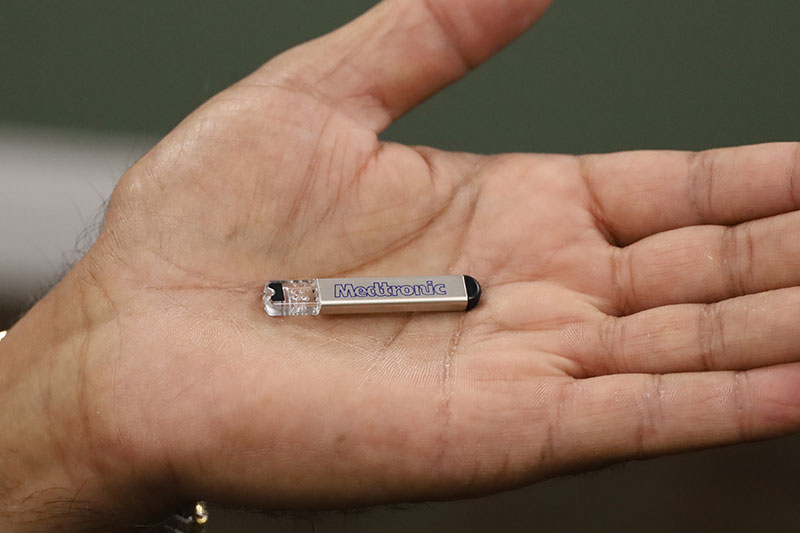What is a Loop Recorder?
An implantable loop recorder is a type of heart-monitoring device that records your heart rhythm continuously for up to three years. It records the electrical signals of your heart and allows remote monitoring by way of a small device inserted just beneath the skin of the chest.
The device records the electrical impulses of your heart and transmits them automatically to your doctor by way of the internet and wireless technology. All you need to do is keep the transmission monitor your doctor gives you besides your bed. Transmissions occur while you’re asleep. You can also activate the data transmission process yourself. Also, your doctor may ask you to keep a diary of your symptoms.
Your doctor will interpret the results of your remote transmission and call you if he or she has any concerns. You’ll likely need to see your doctor once or twice a year for routine check-ups while the device is in place.
An implantable loop recorder is invisible and doesn’t interfere with your daily activities. It has no patches or wires, and you don’t have to worry about getting the device wet while bathing or swimming. These devices are supposed to be safe for use during a medical imaging procedure called magnetic resonance imaging (MRI), but let your doctor know about your implant before you schedule such a test. It’s also possible an implantable loop recorder might set off metal detectors, for example, at an airport. Your doctor can provide you with a device identification card to carry with you for such situations.
Before the procedure:
You don’t need to do anything special to prepare for this procedure. You must take, all your medications on the morning of the procedure as prescribed
If you are allergic to any medications, please inform staff
During the procedure:
Video of Dr. Jamnadas implanting a loop recorder
The procedure to insert the heart monitor is usually done in a doctor’s office, with a local anesthetic and does not require for you to have a driver. Your doctor makes a tiny incision, inserts the device, which is smaller than a key or a thumb drive and closes the incision. The device stays in place for up to three years.
After the procedure:
Incision Care
- Inspect incision every day. Call our service if you have any of the listed symptoms:
Redness, Swelling, Heat, Tenderness, Drainage, or Fever (Temp >100.6). - If dressing is still on at discharge, you may remove it, but DO NOT remove the steri-strips. The steri-strips will fall off on their own. You may shower, dab the wound, do NOT rub it. Keep it dry and clean.
- Do NOT use ointments, (unless told otherwise), powders, or gels on or near the incision.
- Do not touch the wound unnecessarily
Activity
Gradually increase your activity after 3 to 5 days.
The procedure to insert an implantable loop recorder has some risk because it involves minor surgery. Your care team will advise you to watch your incision for signs of infection and, perhaps, to limit activities until the wound heals.

